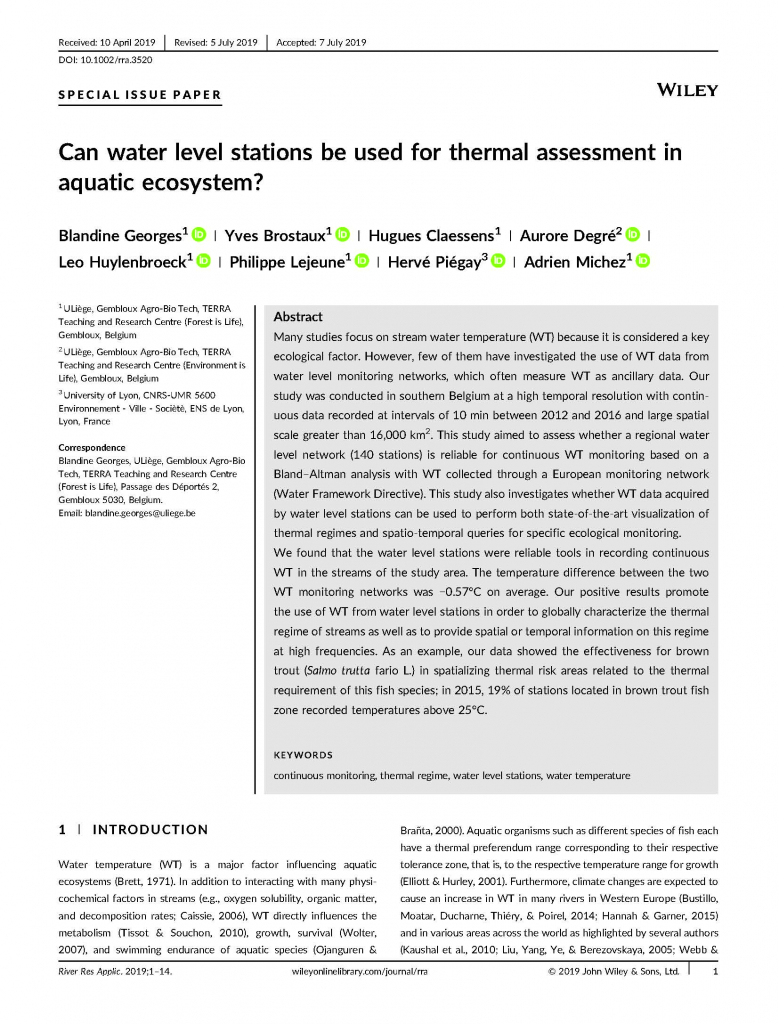
Georges B., Brostaux Y., Claessens H., Degré A., Huylenbroeck L., Lejeune P., Piégay H., Michez A.
Many studies focus on stream water temperature (WT) because it is considered a key ecological factor. However, few of them have investigated the use of WT data from water level monitoring networks, which often measure WT as ancillary data. Our study was conducted in southern Belgium at a high temporal resolution with continuous data recorded at intervals of 10 min between 2012 and 2016 and large spatial scale greater than 16,000 km2. This study aimed to assess whether a regional water level network (140 stations) is reliable for continuous WT monitoring based on a Bland–Altman analysis with WT collected through a European monitoring network (Water Framework Directive). This study also investigates whether WT data acquired by water level stations can be used to perform both state of‐the‐art visualization of thermal regimes and spatio‐temporal queries for specific ecological monitoring. We found that the water level stations were reliable tools in recording continuous WT in the streams of the study area. The temperature difference between the two WT monitoring networks was −0.57°C on average. Our positive results promote the use of WT from water level stations in order to globally characterize the thermal regime of streams as well as to provide spatial or temporal information on this regime
at high frequencies. As an example, our data showed the effectiveness for brown trout (Salmo trutta fario L.) in spatializing thermal risk areas related to the thermal requirement of this fish species; in 2015, 19% of stations located in brown trout fish zone recorded temperatures above 25°C.
Consultez la notice complète de l’article sur ORBi
